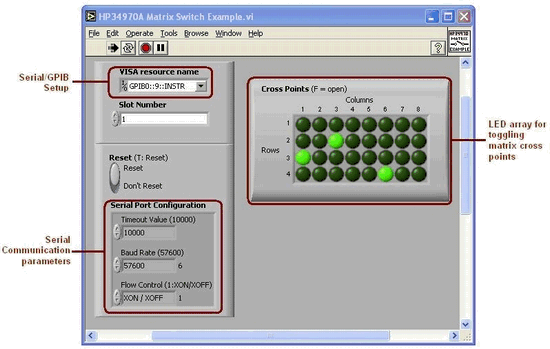Serial Communication With Labview Tutorial Timed
HI, I have a trouble to take data from balance with respect to time via RS 232 interface. After some time hitting run, it was giving an error message that error occured at VISA read with code - and Operation timed out before completion of execution. I'm Novice in programming with Lab VIEW, any suggestions would be greatly appreciated Thanks KilaruCould you tell us a little more about your application and/or upload a VI/LLB that shows what you are trying to do and the problem? Also, you should take a look at the examples in LabVIEW for serial communications. Finally, are you sure the hardware you are connecting to is working okay? Timothy J Williams Mcq Computer Science Pdf. Have you tried to talk to it using a simple serial terminal application on the same computer as you have LabVIEW on?


Could you tell us a little more about your application and/or upload a VI/LLB that shows what you are trying to do and the problem? Also, you should take a look at the examples in LabVIEW for serial communications.
Jun 18, 2012 Serial Communication using Labview.avi. LabVIEW Tutorial. SERIAL COMMUNICATION BY UART USING MICROCONTROLLER - Duration. Does anyone know where a good LabVIEW Tutorial on Serial Connections (RS232). Any help is appreciated. Getting a timestamp just requires you to call the Get Date/time In Seconds whenever you do a serial read. RS232 communication with LabView.
Finally, are you sure the hardware you are connecting to is working okay? Have you tried to talk to it using a simple serial terminal application on the same computer as you have LabVIEW on? Michael, I'm uploading my program. Please check this out.
I'm not sure how to check whether hardware working properly or not. It was mentioned in the manual that interface should connect with DTE(computer) with female, but I end up with both male at the computer. So I used another pin to change it to female at DTE. Thank you Kilaru. I'm not sure how to check whether hardware working properly or not.
It was mentioned in the manual that interface should connect with DTE(computer) with female, but I end up with both male at the computer. So I used another pin to change it to female at DTE. Kilaru A long time ago (at least in computer hardware terms) the folks who came up with the RS-232 communications specification decided that there would be two broad classes of equipment. DTE (Data Terminal Equipment) and DCE (Data Communication Equipment). An RS-232 communication link was expected to have a piece of DTE at each end with DCE in the middle. As you might guess, teletypes, terminals and computers are considered to be DTE and things like modems are considered to be DCE.
The specification actually went on to say all DTE connectors would have male pins and be wired in a certain fashion and all DCE connectors would have female sockets and also be wired in a certain fashion. In the case of DB25 connector, for DTE, pin #2 was for transmission of data out from the DTE and pin #3 was for receipt of data coming into the DTE. On the other hand, for the mating DCE connector, socket #2 receives data into the DCE and socket #3 transmits data out of the DCE. This makes sense so far - pin#2 transmits & mating socket #2 receives - and - pin #3 receives while its mating socket #3 transmits - you can practically see the data flow. But if you go on to imagine what's going on in the DCE you will soon realize it has a female connector on each side of it and, on both those connectors, sockets #2 receive data into the DCE and both sockets #3 transmit data out of the DCE. Obviously the only way that this will actually work is if the transmit and receive lines (and all the other handshaking lines as well) get swapped within the DCE.